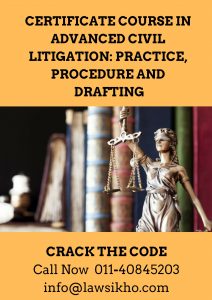This article is written by Srishti Kaushal, a first-year student of Rajiv Gandhi National University of Law, Patiala, Punjab, pursuing B.A.LL.B. (Hons.). In this article, she discusses what the shell companies are, how these can be identified, and what the government is doing to tackle issues related to shell companies.
Introduction
A few years back, while talking about India’s battle against black money, Prime Minister Narendra Modi said that more than 1.75 lakh shell companies had been de-registered under his Government.
Recently, the Securities and Exchange Board of India also brought 331 shell companies under its radar and put a restriction on all trading activities of these companies.
Such news related to shell companies is a common occurrence. But what are these companies? Why are there constant efforts to put restrictions on their functioning? How successful has the government been in actually putting these restrictions?
We will answer all these questions in this article.
What is a shell company?
Before answering any other question, let us first understand what exactly a shell company is.
At present, neither Companies Act, 2013 nor Companies Act, 1956 nor any other Act gives a definition for a Shell company. In fact, around three years back, a parliamentary panel asked the Ministry of Corporate Affairs to find a definition for ‘Shell Company’. Efforts to define it are still being made and many recommendations have been considered.
One suggestion was given by the Organisation for Economic Co-operation and Economic Development. The definition given was, “A shell company is a firm that does not conduct any operations in the economy (other than in a pass-through capacity), but it is formally registered, incorporated, or legally organized in the economy.”
Thus, a shell company is a company that exists only on paper. It does not have any actual active business operations nor any significant number of assets. These companies do not engage in any economic activities but have some corporate legal personality.
How to identify a shell company?
Though there is no statutory provision in this regard, The Securities and Exchange Board of India has identified certain parameters for the identification of shell companies. These are:
- No significant operation activities;
- No significant operational assets;
- Acting only in a pass-through capacity (like a channel for some other purpose).
Besides SEBI, there are many agencies and individuals who have also tried to lay down parameters for identifying these companies. Some parameters laid down are:
- These entities have insignificant business activities.
- These entities have an insignificant amount of assets.
- They are basically set up to facilitate cross border currency and asset transfer.
- They do not have any physical existence at the registered address.
- Multiple companies at times have the same registered address.
- These companies have no economic rationale of any kind behind their banking transactions.
- These companies carry out rotational transactions of money without any apparent legitimate business.
- High-value transactions which are inconsistent with the operations of the business.
Why are shell companies created?
Now that we know how we can identify a shell company, let’s see why these companies are created.
Today, Shell companies are usually associated with the following activities:
-
- Tax Evasion: Many times corporations set up shell companies at offshore venues where the taxes imposed are very less. These places are known as ‘Tax Havens’. Examples of these places are Panama and Switzerland. These corporations park their assets in the shell companies and escape from paying taxes on these assets.
- Money laundering and converting black money into white money: A lot of shell companies were discovered in 2016 when demonetization happened. This was because they were engaged in making use of black money. Many people and corporations make use of shell companies to store their surplus cash, instead of making deposits.
- Making money off Ponzi Schemes: People or corporations may create shell companies to defraud people by offering fraudulent schemes and earning money out of it. By making use of these companies, they save themselves as when fraud is found, it is very difficult to find the actual people behind the scheme, and the only thing upon which the blame can be put on is the company (which is not of any use).
- Hide identities of real owners: Finding the real owner of a shell company can be a problematic task as more often than not, the owners of these companies successfully hide their identities. They cannot be located as usually the registered office of the company or directors is at a completely different place, then the address submitted to the registrar.
Are shell companies always created for illegal purposes?
No, it is not necessary that a shell company is engaging in illegal activities. Though, till now we have only discussed how shell companies can be used illegally, at times, shell companies work within the legal limits as well. Let’s look at an illustration to understand how shell companies can work legally.
Company ‘A’ creates a subsidiary solely for looking after its HR Functions. Now, this subsidiary does not engage in any form of trade or business. Because, it neither has any significant assets, nor does it have real business operations, this subsidiary can be considered as a shell company, but it is not illegal.
In Assam Co. India Ltd. vs. Union of India, a company owning a substantial number of tea estates, producing millions of kilograms of tea on an annual basis and feeding thousands of families was termed a ‘shell company’. The court held that considering the negative implications of being branded as a shell company, it was not justified to treat the company as a shell company.
The legal reasons for which a shell company can be created are:
- Hold or store money temporarily when the main company/ owner of the shell company is planning to start a new company.
- If a company wants to hide its dealings with another company, which has a bad reputation, it may create a shell company solely to engage with the other company.
- A shell company may be created to stage a hostile takeover. This happens when a company buys another company, without the approval of the management of the target company.
- To protect assets from lawsuits.
- In case a company is working in a dangerous country, for instance, with rampant terrorist activities, then people may formulate shell companies to hide money in order to avoid being a target of criminals and thieves.
- Shell companies can also be created to gain access to foreign markets.
As mentioned creation of shell companies is not an offense. However, some issues arise with establishing a shell company. These are as follows:
- In case a company forms a shell company offshore, it can lead to bad publicity as profits are being sent out of the nation.
- While not necessarily illegal, using a shell company to hold assets in it, falls in a legally grey area, and could lead to legal issues. Hence, it is definitely advised not to create shell companies.
Laws that a shell company may violate
Now that we know illegal purposes a shell company is created for, let’s have a look at some of the laws it violates when engaging in such illegal activities.
- Benami Transactions Prohibition (Amendment) Act, 2016, which prohibits anyone from holding assets under a fake name to avoid taxation.
- The companies (restriction on the number of layers) Rules 2017, which restrict the number of layers of subsidiaries a company can have.
- Prevention of Money Laundering Act (PMLA): When black money is passed through a shell company, it is presented as tainted money. This is punishable under Section 3 of PMLA.
- Indian Penal Code: In case the shell company is used for engaging in Ponzi Schemes, the owners and anyone involved can be punished under Section 420 of IPC which prohibits cheating.
- Black Money (Undisclosed Foreign Income and Assets) and Imposition of Tax Act, 2015.
- The Income Tax Act, 1961: PoEM Guidelines issued by the Central Board of Direct Tax.
How does the existence of shell companies affect you?
To answer this question, you need to ask another question is whether you are ready to let your money be used for illegal purposes? If you invest in a shell company, or in an entity which has set up a shell company, your money might be used for illegal purposes.
Moreover, since the government has been on a mission to remove these companies from the exchanges, you may lose your invested money completely as well.
Besides, if you are an honest taxpayer, you are bound to be exasperated by seeing a company or an individual repeatedly escaping the tax liability. Also, repeated tax evasion harms the economy as a whole, as well.
Challenges faced in India in an effort to stop illegal shell companies
The Indian government has been making significant efforts to restrict shell companies from engaging in illegal activities. But, it has faced certain issues. These are:
- Lack of a legal definition for ‘shell company’ under any law.
- No specific law to deal with shell companies primarily.
- Existence of a complex corporate structure, which makes it difficult to track transactions from different accounts and differentiate between illegal and legal shell companies.

What is the government doing to act upon the illegal shell companies?
- The income tax department carried out an investigation to find out all the shell companies which were engaged in illegal activities and initiated criminal prosecution against the beneficiaries of many companies.
- Ministry of Corporate Affairs targeted shell companies for deregistration, attacking the companies who did not file the required financial statements. Under Section 248 of the Companies Act, 2013, the Registrar of Companies struck off many such companies from the register of companies.
- In February 2017, a joint force was set up. Let’s look into the achievements, efforts, and suggestions of this task force in detail.
Task Force
The task force was headed by the Secretary and Revenue Secretary of the Ministry of Corporate Affairs. Others Members of this task force include the Department of Financial Services, SFIO, CBDT, RBI, SEBI, CBEC, CBI, ED, FIU-IND, DG GSTI, and DG-CEIBs. Since its incorporation, It has met multiple times.
It has given many suggestions, which have been accepted and followed:
- Requested the Reserve Bank of India to freeze the accounts of the defaulting companies who have failed to file the financial statements and returns in the stipulated time limit, as required by the Companies Act, 2013.
- Asked SEBI to ask all the exchanges operating in India, to appoint auditors to verify the credentials of suspected companies. If it is found that their credentials do not match, the stock must be delisted.
- Asked Serious Fraud Investigation Office (SFIO) to create a database of shell companies and share it with all the required regulators.
- Directed all members to send the details of any CA’s who were involved in any such malpractice to the Institute of Chartered Accountants of India (ICAI).
- It has also directed the Centre to come up with a concrete definition for shell companies, so as to enable better implementation of its efforts.
The main achievements of the task force are:
- Compilation of a database of shell companies (by SFIO). This database is elaborate and is divided into 3 sections which are Confirmed List, Derived List, and Suspect List. The Confirmed List contains the names of over 16500 shell companies which have been found to be involved in illegal activities by various law enforcement institutions. The Derived List contains over 16700 companies identified as shell companies on the basis of 100% common directorships with confirmed shell companies. The Suspect List contains a list of almost 81000 companies which are suspected to be shell companies by the SFIO on the basis of multiple red flag indicators.
- SEBI has directed the stock exchanges to initiate action against 331 suspected shell companies and put a ban upon them, disallowing them from trading. Bombay Stock Exchange and National Stock Exchange restricted 162 and 48 companies respectively, from active trading.
- The Ministry of corporate affairs has identified and removed more than 2,00,000 companies from the register, as they have not filed the financial statements and returns.
Conclusion
By engaging in tax evasion, money laundering, etc., shell companies engaged in illegal transactions, as they usually are, can be a huge hurdle for the economy. In India, there is a big issue with regards to dealing with these companies. This is because there is no specific provision or law which explicitly deals with Shell companies. Moreover, a legal definition and criteria for recognition is also lacking.
The need for a coherent structure to deal with shell companies is highly felt. Such a structure also needs to ensure that such regulation does not create unnecessary obstacles for legal entities, which appear to be shell companies.
A careful balanced definition of shell companies is required which should be wide enough to cover all criteria to identify the illegal shell companies, while at the same time leaving all legal companies out of its purview.
References
- https://www.mondaq.com/india/CorporateCommercial-Law/841132/Shell-Companies-In-India
- https://enterslice.com/learning/shell-companies/
- https://www.sbsandco.com/blog/challenges-to-the-shell-companies-in-india
Students of Lawsikho courses regularly produce writing assignments and work on practical exercises as a part of their coursework and develop themselves in real-life practical skills.
https://t.me/joinchat/J_0YrBa4IBSHdpuTfQO_sA
Follow us on Instagram and subscribe to our YouTube channel for more amazing legal content.
The post All you need to know about shell companies appeared first on iPleaders.












